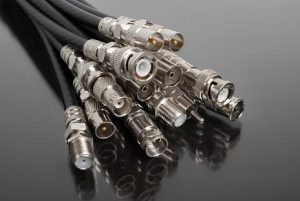What Are E Bend Waveguides and Their Applications?
E bend waveguides are crucial components in RF and microwave systems, enabling effective redirection of electromagnetic waves within various equipment configurations. Known for their ability to bend along the electric field (E-field), these specialized waveguide sections play a vital role in managing signal paths in complex installations.

Fundamental Characteristics of E Bend Waveguides
Design and Functionality
E bend waveguides are designed to bend the waveguide path in the plane of the electric field, affecting the broader dimension of the waveguide. This specific orientation is critical because it ensures that the electromagnetic waves can be redirected with minimal disruption to their amplitude and phase, maintaining signal integrity throughout the system.
Optimization of Signal Integrity
One of the key advantages of using an E bend is its ability to preserve the quality of the signal. By aligning the bend with the electric field, E bend waveguides help maintain the polarization characteristics of the wave, which is essential for the consistent performance of high-frequency transmission systems.
Applications Across Various Technologies
Satellite Communication Systems
In satellite communications, E bend waveguides are extensively used to route signals within the payload of the satellite, where space is a constraint and maintaining signal integrity is paramount. Their ability to facilitate sharp yet loss-minimizing turns within the satellite’s body makes them indispensable in these high-stakes applications.
Radar Systems
Radar systems benefit significantly from E bend waveguides, particularly in phased array setups where multiple waveguides must be precisely arranged to form complex antenna patterns. E bends allow these systems to be compactly designed while ensuring that each waveguide precisely directs its portion of the signal.
Telecommunications Infrastructure
Within the telecommunications sector, E bend waveguides facilitate the design of RF distribution networks that require complex routing solutions to fit within infrastructure limitations. These waveguides are often found in cellular towers and broadcasting facilities, where space optimization and signal fidelity are crucial.
Medical Imaging Equipment
In the field of medical imaging, particularly in systems like MRI, E bend waveguides help in routing RF signals to and from the scanning apparatus. The precise control over signal direction and integrity is critical for achieving high-resolution images and reliable diagnostics.
Research and Scientific Instrumentation
Research facilities often employ E bend waveguides in experiments that involve electromagnetic wave manipulation, such as particle physics and materials science research. Their ability to effectively manage high-frequency signals is essential for the accurate gathering and interpretation of data.
Advantages of E Bend Waveguides
Minimized Signal Loss and Reflection
The strategic design of E bend waveguides minimizes signal loss and reflections, which are common issues in improperly aligned bends. This makes E bends particularly useful in high-frequency applications where even minor losses can degrade system performance.
Ease of Integration
E bend waveguides are relatively easy to integrate into existing systems due to their compatibility with standard waveguide dimensions and interfaces. This ease of use is vital for system upgrades and maintenance, ensuring minimal downtime and disruption.
Durability
Constructed typically from metals like copper and aluminum, E bend waveguides offer excellent durability and resistance to environmental factors, ensuring long-term reliability even under harsh operating conditions.
E Bend Waveguides are indispensable in modern RF and microwave systems, offering a blend of performance, efficiency, and adaptability. Whether it’s in space, in the air, or in the laboratory, these components ensure that high-frequency signals are transmitted precisely where needed, showcasing their critical role in advanced technological applications.